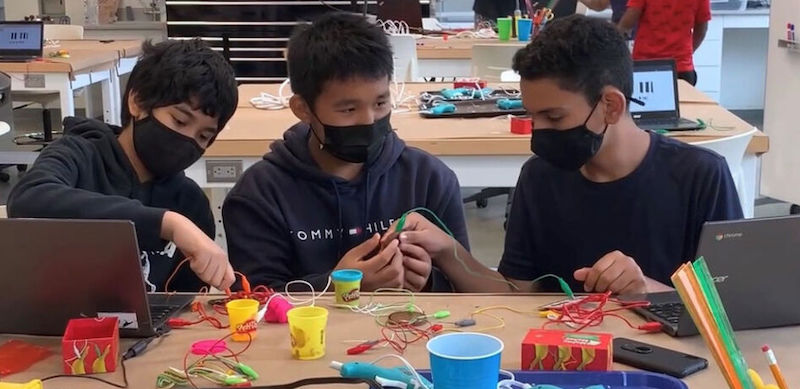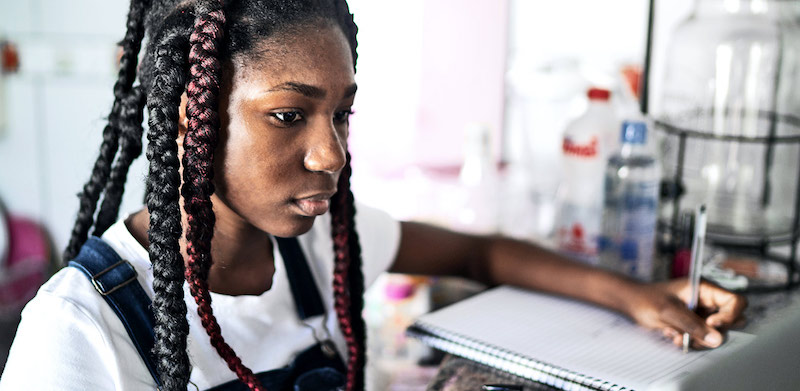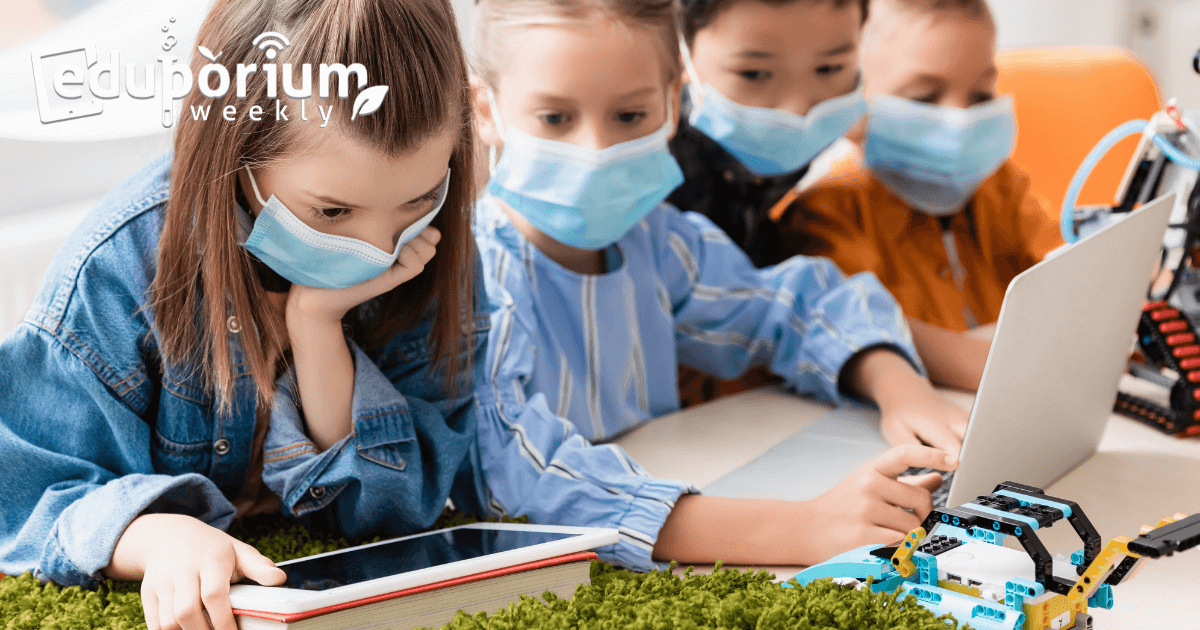When everything we knew about teaching and learning changed last March, STEM education was front and center. Despite its monumental importance for students, almost every educator had to put it in on the back burner temporarily. Even now, as so many teachers feel compelled to scramble and make up for lost time, creating STEM learning opportunities remains a challenge. Whatever way you look at it, the world and the school experience have each changed dramatically. Both collaborative and hands-on learning require special strategies these days and that's even if educators can fit them in. It's been a challenge, but some have found success in adapting to the times.
Redesigning STEM Education for Today's Requirements
We've advocated for years that STEM education is a right as well as a requirement for success in the future. Today, however, additional needs have been born and methods have been shifted surrounding the necessity to keep students safe. Students—especially those who are vulnerable or underserved—still need exposure to STEM opportunities. Those barriers to an equitable education were exacerbated throughout the pandemic and are only now starting to be addressed. We've seen other achievement and access gaps throughout the pandemic, however, which has made it easy to forget about STEM. These gaps remain an issue but educators are learning more about how to reconcile them.
Shifts in tools, space, and collaboration.
One of the biggest shifts we've seen is in the equipment educators use for STEM education. In many cases, they've needed to commit to tools that are more portable and affordable, which allows for easier transport. This also helps make cleaning and sanitizing more efficient. Also, teachers and students have had to contest with a shift in collaborative opportunities. Despite safety measures, some school rules dictate that students shouldn't be sharing equipment. This has led to more individual learning, which can still benefit students despite the lack of up-close collaboration. One possible solution is to encourage more verbal and digital collaboration to ensure students are still getting this practice.
Changes to STEM aren't necessarily bad.
In many schools, STEM teachers also teach other subjects—whether they're related to STEM or not. Many may have had to re-allocate their commitments to STEM instruction in favor of other classes, which caused additional shuffling. Despite this inconvenience, it could have helped them learn about altering lessons and creating different types of hands-on learning. We've heard how teachers have discovered new digital tools and methods and this is one example of just that. Obviously, we've needed a great deal of creativity and patience but redesigning STEM education following the pandemic has also been inspiring. It's still possible for teachers to design exploration-based lessons, to enable new types of collaboration, and keep that STEM spirit alive.
STEM Needs to Be In-person...Ususally
When we think of STEM education, we immediately think of hands-on exploration and collaboration. Though things are certainly returning more to that, we knew it would be a huge adjustment—at least at first. Particularly in high school and higher education, students begin to take more advanced STEM classes—the sciences, maybe a design class, or an engineering lab. The point is that the essence of these classes lies in their hands-on nature. And, the problem is that they're nearly impossible to replicate in a distance learning environment. One silver lining is that it is possible to keep students exploring STEM principles and remaining at a safe distance from each other. Nonetheless, it's been tricky to find ways to keep touching, feeling, and up-close observation in play.
Keeping equity concerns in mind.
One thing about close collaboration in STEM classes is that it's now controversial. Some parents, students, and educators believe it's not worth risking everyone's health in order to preserve this component of the curriculum. In places where they can swing it, students could receive daily tests to ensure they're able to participate in STEM labs and experiences. Of course, this is easier said than done, but a potential way to overcome this problem. On the flip side, if STEM classes remain altered for the foreseeable future, some students will undoubtedly fall behind. This perceived move away from equitable STEM experiences is likely to hinder the development of certain types of students. And, although it seems hard to believe, educators can continue facilitating effective STEM experiences given the challenges they face.
Finding a way forward.
In order to fully prepare for a future STEM career, students need hands-on learning. At the high school level, it's much more challenging to replicate pre-pandemic opportunities due to few resources, money, and space. At the college level, however, some of experiential learning has continued without as many disruptions. In some cases, school leaders have had to consider opening labs and academic buildings for these students since it's so challenging to replicate these classes online, while it's possible (though not ideal) to teach others in that way. Plus, students have had fewer opportunities to land internships or other practical experiences throughout the pandemic. Keeping these factors in mind, it's been quite the shift, but pandemic-era STEM education is forging forward in one way or another.

New Challenges in STEM Education
We know that everyone discovered a whole laundry list of challenges related to finding success and satisfaction with remote learning. We've also indicated how STEM education experiences have arguably seen more severe shifts than those in other subjects. For students—typically older ones—who believed prior to the pandemic that they'd undoubtedly be pursuing STEM, those opportunities they'd become used to were gone. Trying to replicate STEM experiences in remote learning was far from easy and, at times, impossible. Rather than feeling like they'd been excused from assignments, however, there were plenty of students who realized how tough this era would be on their educational development, particularly in STEM subjects.
Students are taking new things into account.
There's also the possibility that students who intended to major in a STEM field or those who have already begun their higher education are reconsidering things. Whether it's due to financial reasons, logistical concerns, or how the world's changed, it might not be the most attainable thing in their minds right now. Aside from that, internship and practical programs aren't as common as they once were. Whether caused by staffing shortages, health fears, or other reasons, that space has also changed. Plus, middle and high school students may feel demoralized and find themselves questioning their abilities after this time period. If taking care of family members, for example, their grades may have declined. While we don't want it to be the case, how they perceive themselves and their abilities often affects a young student's decision to pursue STEM.
Offering students new types of support.
The challenges, especially for students pursuing a STEM degree are clear. What's not so clear, however, is how to successfully address them. Students need redesigned support from almost everyone in their lives—teachers, administrators, parents, and counselors. As things have shifted, many of them have realized that they need some more basic supports as they figure things out. Whether it's selecting classes, researching majors, or deepening their understanding of the impact they could make with a STEM education, many of these things aren't talked about as commonly these days. And, not for nothing, but young students still need encouragement to explore STEM learning, too. If they don't have that, we'll have additional problems with hardly anyone enrolled in STEM majors in the next decade.
The Pandemic and STEM Achievement Gaps
Various achievement gaps in education have been contributing to inequities for decades. It seems that it's only been lately, however, that the average person has become aware of these gaps, which are created by factors like socioeconomic status, geographical location, and equitable access. In terms of the pandemic and STEM education, the largest gap we'll likely be left with is an opportunity gap. Students who were poised to take a significant step in their STEM development may have lost out on classroom opportunities, hands-on experiences, and, for college students, internships. While already facing a shortage of qualified STEM professionals, various industries could see that number dip even more. This is due largely to lower numbers of students simply not receiving opportunities we'd all taken for granted.
Gaps hit certain students harder.
STEM subjects, as we know, are extremely hands-on. This made it nearly impossible for some types of students to fully grasp key concepts from home. Battling STEM achievement gaps that already existed prior to the pandemic has also made things even tougher on overworked educators. Plus, when it comes to Hispanic and Black students versus Asian and white students, the former were already—on average—progressing more slowly. Since the remote learning era was filled with makeshift curricula, no in-person feedback, staggered attendance, and challenges to create engagement, overall student development slowed, affecting STEM readiness in these student populations. Especially for early elementary students—a time in which certain gaps multiply— it may be a tough challenge to overcome.
Making purposeful attempts to curb expanding gaps.
Statistically, some figures point to minority students receiving less funding than others—up to $1,200 less per student. They may have no STEM knowledge or experiences before kindergarten either and be unable to access out-of-school opportunities to help supplement skill development. As they get older, the numbers aren't that much more encouraging. So, as we (eventually) turn a corner on the emergency learning era, it's crucial to address these gaps that are potentially returning to or surpassing pre-pandemic numbers. Being away from their classrooms for over a year will likely have residual effects on STEM development for all students. But, remember, that it's those who were already struggling to keep up who are the most likely to experience the greatest setbacks.

Hurdles to Teaching STEM in a Pandemic
All teachers have had to overcome challenges during the pandemic and they've done a fantastic job. We wouldn't say that STEM teachers have had it rougher than, say, a kindergarten teacher, but it's been a huge adjustment for them as well. It started with figuring out a way to deliver instruction over the Internet, keep students engaged, and leave behind most hands-on elements, including tech tools. They quickly realized, however, that there was more to it than surviving class meetings. Now, as things are somewhat normal again, the pandemic challenges persist. Educators are realizing just how little some students did in remote learning and playing catch-up is a constant endeavor. Plus, knowing how disengaged some of these students have been is completely demoralizing to teachers.
Building on pandemic struggles.
While some teachers reported becoming much more comfortable with using technology during the pandemic, we'd hoped this would be the same for students. Those who did have regular access to it, however, are probably more comfortable. It's those who didn't show up to class meetings who are lagging behind. For those who did show up consistently, teachers had to be prepared. This often meant staying up late learning how to fit the experiences they'd typically delivered in a classroom into online learning. It also often meant they'd have to learn how to use the technology and practice until they felt completely comfortable. Since we're back to regular in-class learning in most places, we're hopeful that the resilience these teachers showed can help them feel more confident than ever.
Understanding the limitations as we move forward.
One other setback for teachers has been incorporating standards requirements in their new ways of teaching. Understandably, this was tougher in remote learning but it hasn't necessarily returned to normal either. This has been connected to fewer opportunities for true, inquiry-based experiences. It's also somewhat connected to a lack of resources or the ability for students to share them. All the while, teachers have to be conscious of the varying amounts of support students need. STEM education is ideally about creating independence and problem-solving opportunities. Not every teacher has that luxury at the moment, however. If possible, it's ideal to find a balance between hand holding and encouraging free exploration. Hopefully then, we can continue with our regularly scheduled STEM programming as much as possible.
For the latest EdTech, STEM, and 21st century education news, follow us on Twitter and Instagram. Like us on Facebook, too, or sign up for our newsletter for our latest product announcements and offerings. If you have an idea for an Eduporium Weekly theme, send us a message on social media or comment below.



